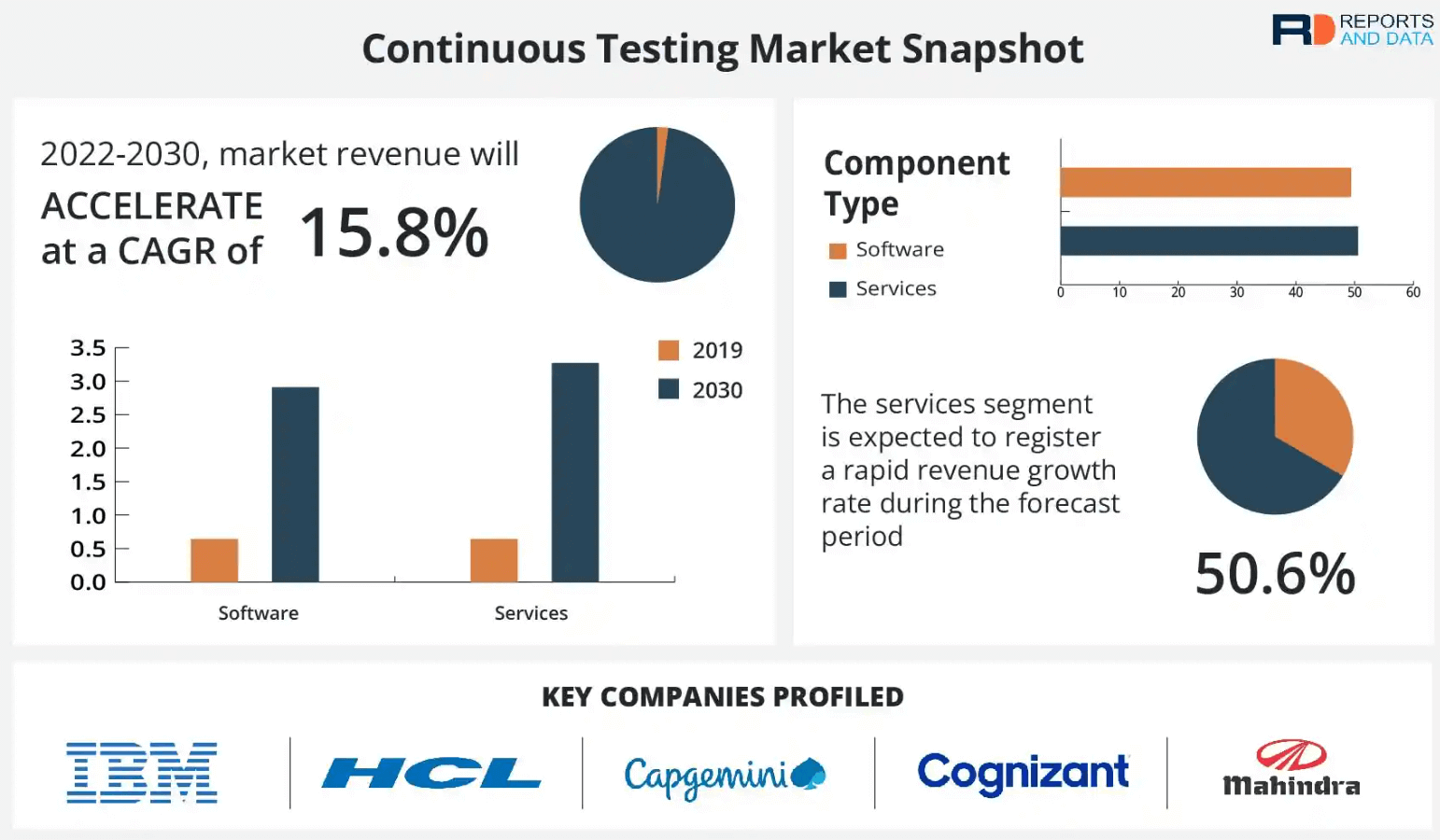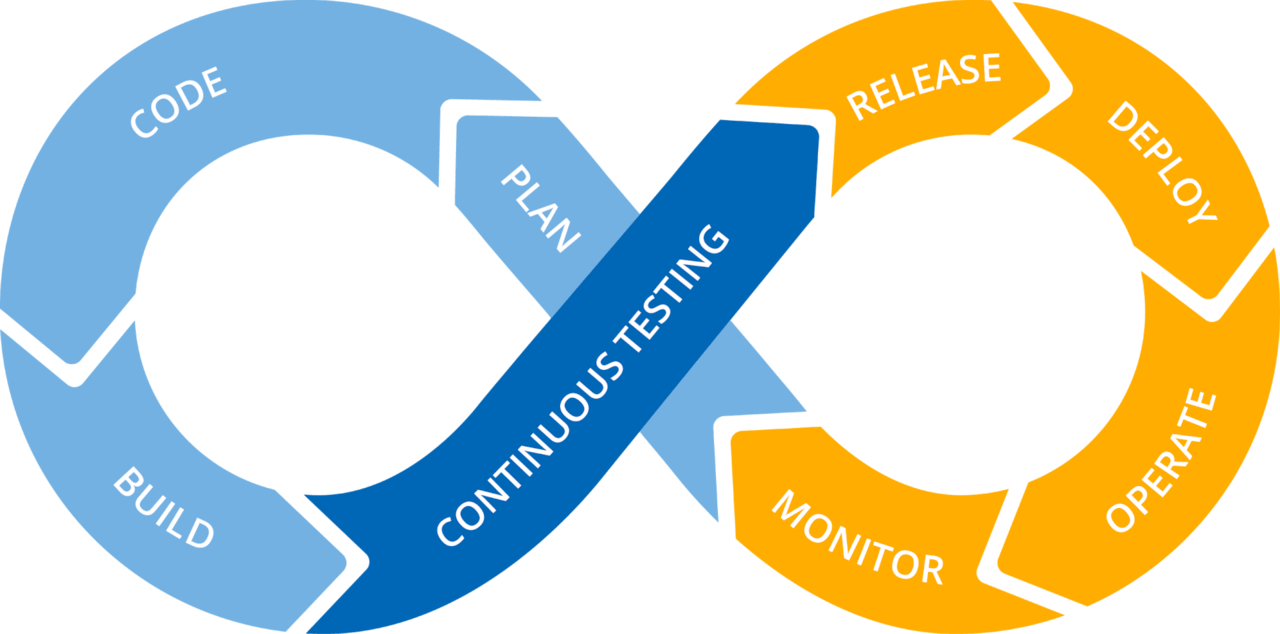Unlock Continuous Testing Excellence: Optimize CI/CD Pipelines with HyperExecute
Misba Kagad
Posted On: October 16, 2023
![]() 34822 Views
34822 Views
![]() 12 Min Read
12 Min Read
As organizations strive to stay competitive and deliver high-quality software to their users, they are turning to continuous testing practices and optimizing their CI/CD (Continuous Integration/Continuous Deployment) pipelines to achieve faster feedback loops and enable continuous delivery.
Gone are the days when software development was a linear, step-by-step process that took months or even years to deliver a new product or feature. Today, businesses demand rapid innovation and quick responses to ever-changing market conditions. This has given rise to a paradigm shift in how software is developed and delivered.
In this blog, we will delve into the world of continuous testing and CI/CD pipeline optimization, exploring test orchestration’s role, the importance of CI/CD pipelines in modern software development, and their benefits in shortening release cycles, reducing defects, and enhancing software quality.
Whether you’re a developer, quality assurance engineer, DevOps practitioner, or simply curious about software development, this post offers valuable insights into tools, techniques, and best practices for achieving faster feedback loops and continuous software delivery.
So, let’s embark on this journey to discover how continuous testing and CI/CD pipeline optimization can accelerate your software delivery process and keep you ahead of the competition.
Why do we need continuous testing in software development?
Continuous testing is a software development practice that involves running automated tests throughout the entire software development lifecycle, from code creation to deployment. It’s a core component of DevOps and Agile methodologies and ensures that code changes are thoroughly evaluated for quality, functionality, and performance in an ongoing and automated manner. Continuous testing identifies and addresses issues as early as possible in the development process, leading to higher software quality, faster delivery, and reduced risks.
In 2021, the worldwide continuous testing market was valued at $1.67 billion, and anticipated to grow revenue CAGR of 15.8% over the following five years. The main drivers of this growth are the growing demand for faster application releases and the increasing need to reduce costs while enhancing test coverage.

Source: www.reportsanddata.com/report-detail/continuous-testing-market
Advantages Of Continuous Testing
- Early Issue Detection: Continuous testing detects errors, bugs, and regressions early in the development cycle, reducing the time and cost of fixing them.
- Rapid Feedback: Developers receive immediate feedback on their code changes, enabling quick adjustments and improvements, which boosts productivity.
- Faster Delivery: Continuous testing integrated into the CI/CD pipeline accelerates software releases, allowing organizations to respond rapidly to market demands.
- Reduced Costs: Continuous testing lowers development and maintenance costs by addressing issues early and automating repetitive testing tasks.
- Risk Mitigation: It helps identify and address security vulnerabilities, performance bottlenecks, and compatibility problems, reducing the risk of critical issues in production.
- Improved Quality: Continuous testing ensures that software meets quality standards consistently, enhancing customer satisfaction and reducing post-release defects.
- Alignment with Agile and DevOps: Continuous testing aligns with the automated practices of Agile and DevOps, supporting their goals of collaboration, speed, and reliability.

Continuous Testing Challenges and How to Fix Them?
Addressing continuous testing challenges, learn how to overcome resistance,
automate effectively, manage false positives/negatives, optimize resource utilization, enhance security, and adapt tester roles for successful Continuous Testing.
- Implementing a New Mindset: Transitioning to Continuous Testing can be met with resistance due to changes in team culture and mindset. To overcome this challenge, organizations should communicate the benefits of the change and give teams time to adapt.
- Automating Effectively: Instead of automating everything, organizations should focus on tests that provide the highest return on investment, considering factors like business value and risk.
- Continuous Testing Beyond Testing: Continuous Testing involves more than just testing; it includes creating health dashboards, testing on multiple platforms, and handling test failures effectively.
- False Positives and False Negatives: Organizations should be aware of false positives (reporting issues when there are none) and false negatives (not detecting real issues). Proper rollback and testing procedures are essential.
- Inadequate Resource Utilization: Organizations should ensure efficient resource usage in Continuous Testing, as it can be expensive. This is particularly important when using cloud providers.
- Role and Responsibilities of Testers: In Continuous Testing, the roles and responsibilities of software testers change. Testers may need to focus on tracking and debugging automation results, performing ad-hoc tests, managing defects, and designing test scenarios.
The Role of CI/CD Pipelines
Continuous Integration/Continuous Deployment (CI/CD) pipelines play a pivotal role in addressing several of these critical challenges. These pipelines automate the build, test, and deployment processes, ensuring that code changes are continuously integrated, tested, and delivered to production.
Here’s an in-depth elaboration of how CI/CD pipelines contribute to the development process:
Automation:
- CI/CD pipelines automate the entire software delivery pipeline. This automation encompasses everything from code integration to deployment in production environments.
- By automating these processes, CI/CD reduces the required manual intervention, which minimizes the chances of human error. Developers can focus more on writing code and less on the repetitive and error-prone tasks associated with deployment.
Consistency:
- One of the major challenges in software development is maintaining consistency across various development and deployment stages. Different environments (development, testing, staging, and production) often have subtle differences that can lead to unexpected issues when deploying code.
- CI/CD ensures consistency using the same automated processes and configurations throughout the pipeline. This means that what works in the development environment is more likely to work seamlessly in production, leading to fewer “it works on my machine” scenarios.
Quick Feedback:
- CI/CD pipelines provide rapid feedback to developers. Every time a developer commits code to the version control system, the pipeline automatically triggers a series of tests and checks.
- This rapid feedback loop allows developers to catch and address issues early in the development cycle when they are easier and less expensive to fix. It encourages a culture of continuous improvement, where code quality is consistently monitored and maintained.
Efficiency and Speed:
- CI/CD accelerates the software development lifecycle. By automating repetitive tasks, developers can release new features and updates more frequently.
- With automated testing and deployment processes, the time from code commit to production deployment is significantly reduced. This speed of delivery is crucial in today’s fast-paced software industry, where the ability to quickly respond to user needs and market changes is a competitive advantage.
Traceability and Accountability:
- CI/CD pipelines provide clear visibility into the entire software delivery process. Each step of the pipeline is recorded and tracked, allowing for easy traceability of changes and identifying bottlenecks or issues in the process.
- Additionally, CI/CD promotes accountability as it becomes evident who made what changes and when. This transparency can be invaluable for debugging and auditing purposes.
Optimizing CI/CD Pipelines & Continuous Testing with HyperExecute
HyperExecute is an AI-powered test orchestration cloud platform that enables test automation teams all over the world to achieve a faster time to market by providing JIT (Just-in-time) testing infrastructure with enhanced test execution speeds, smart test orchestration, detailed execution logs, and much more.
HyperExecute is your ultimate solution for all of your software testing requirements., redefining the pace of software quality assurance. Unlike traditional methods that often bog down development cycles, HyperExecute is engineered to deliver remarkable testing speed, revolutionizing your software development process.
HyperExecute seamlessly integrates with continuous testing, optimizing the CI/CD pipelines helping you achieve:
Speed: HyperExecute offers unparalleled testing speed, enabling you to execute tests at hyper-speed.
Traditional testing methods can be time-consuming, often causing delays in software development cycles. HyperExecute, on the other hand, is engineered to provide exceptional testing speed. This means that it can rapidly execute tests, allowing you to assess your software’s functionality and quality much faster than before.
The significance of this speed cannot be overstated. It enables you to:
- Accelerate Development: Faster tests mean quicker feedback for developers. They can identify and address issues promptly, leading to shorter development cycles and faster releases.
- Enhance Productivity: Testers can cover more ground in less time, allowing them to focus on more critical aspects of testing, such as exploratory testing and test strategy refinement.
- Meet Deadlines: Rapid testing enables your team to meet project deadlines with confidence, even in fast-paced development environments.
Efficiency: It streamlines testing processes, automates tedious tasks, and dramatically reduces the time spent on testing.
Manual testing processes are often plagued by repetitive, time-consuming tasks that can be error-prone and monotonous. HyperExecute is designed to streamline these processes, making testing more efficient.
Here’s how it achieves this:
- Automation: HyperExecute automates various testing tasks, from test case execution to result analysis. This reduces the need for manual intervention and minimizes the chances of human error.
- Resource Optimization: By automating repetitive tasks, you can allocate your testing resources more effectively. Testers can focus on creating valuable test scenarios and ensuring comprehensive test coverage.
- Time Savings: With tasks automated, testers can spend more time on strategic testing efforts, ensuring that the most critical areas of the software are thoroughly tested.
Scalability: HyperExecute is engineered to effortlessly handle large-scale testing efforts, no matter how extensive they may be.
As software projects grow in complexity, so do testing requirements. Traditional testing tools may struggle to scale effectively to meet these demands. HyperExecute, on the other hand, is built to handle large-scale testing with ease.
Here’s what scalability means in the context of HyperExecute:
- Large Test Suites: HyperExecute can manage extensive test suites, ensuring that all necessary test cases are executed efficiently, regardless of how many there are.
- Parallel Testing: It can execute tests in parallel, further increasing testing speed and efficiency, even when dealing with a substantial number of test cases.
- Growing Teams: As your development team expands, HyperExecute can accommodate more testers and testing environments, seamlessly adapting to the evolving needs of your project.
Compatibility: HyperExecute is compatible with popular CI/CD tools and workflows, ensuring a smooth transition. It effortlessly syncs up with the tools you’re already comfortable using.
Continuous Integration/Continuous Deployment (CI/CD) is a widely adopted approach in modern software development. It involves frequent code integration, automated testing, and continuous delivery of software changes. HyperExecute is designed to seamlessly fit into this CI/CD landscape. Here’s how it achieves compatibility:
- Tool Integration: HyperExecute can integrate with popular CI/CD tools such as Jenkins, Travis CI, CircleCI, GitLab CI/CD, and others. This means you can continue to use the tools you’re familiar with while enhancing your testing capabilities.
- API Support: HyperExecute often provides APIs that enable easy integration with CI/CD pipelines. This allows for a smooth flow of information and automation between your CI/CD processes and testing activities.
- Data Exchange: HyperExecute ensures that data, test results, and reports can be easily shared with your CI/CD tools. This facilitates seamless collaboration and visibility for your entire development team.
Enhanced Workflow: HyperExecute seamlessly augments your existing testing workflow without causing any disruption. It complements your established processes, making them even more efficient.
When you’ve already established workflows and processes within your development team, introducing a new testing tool can be disruptive. HyperExecute aims to enhance your existing workflow without causing any interruption. Here’s how:
- Minimal Learning Curve: HyperExecute is designed with user-friendliness in mind. Its interface and workflows are intuitive, requiring minimal training for your team to get up to speed.
- Integration with Existing Processes: Instead of replacing your current processes, HyperExecute complements them. It seamlessly slots into your workflow, allowing your team to continue using familiar tools and methods.
- Customization: HyperExecute can be tailored to align with your specific testing requirements and processes. It adapts to your workflow, ensuring that it enhances rather than hinders productivity.
Flexibility: HyperExecute adapts to your specific needs, offering tailored testing solutions that align with your unique requirements.
Every software development project is unique, and testing needs can vary significantly. HyperExecute recognizes this and provides flexibility to cater to your specific requirements:
- Custom Test Configurations: HyperExecute allows you to define and customize test configurations, ensuring that your testing aligns with your project’s specific needs.
- Integration Options: It offers various integration options to accommodate different workflows and toolchains, ensuring that it can be molded to suit your project’s unique requirements.
- Scalability: HyperExecute can scale as per the requirements of your projects, i.e., different sizes and complexities. It adapts to the demands of your project.
Summing Up!
The integration of HyperExecute into your CI/CD pipelines and continuous testing practices emerges as an indispensable strategy for organizations aspiring to stay competitive and deliver high-quality software. As we’ve witnessed, the demand for faster application releases, reduced costs, and improved test coverage is driving the continuous testing market to remarkable heights.
HyperExecute empowers you to accelerate development, enhance productivity, meet deadlines, improve efficiency, and ensure scalability. It fits seamlessly into your existing workflow, complements your processes, and offers customization to align with your unique testing requirements.
In conclusion, the journey to achieving faster feedback loops, continuous delivery, and higher software quality begins with the strategic integration of HyperExecute into your CI/CD pipelines and continuous testing practices. Embrace this transformative solution, and you’ll not only keep pace with the ever-changing software landscape but also gain a competitive edge in delivering software excellence.
Got Questions? Drop them on LambdaTest Community. Visit now














